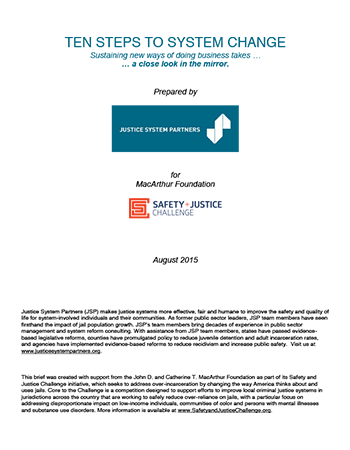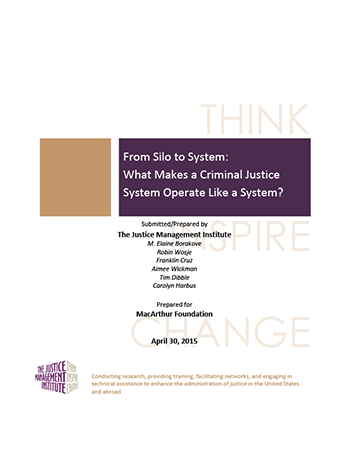Featured Jurisdictions Interagency Collaboration Jail Populations October 21, 2015
A decade ago, rising prison populations and costs seemed to be an uninterruptable trend. Today, however, many states have seen a decline in the number of individuals under correctional supervision. As states make policy and budgetary changes to move the prison population needle in the other direction, local corrections resources are affected: laws aimed at reducing the prison populations may result in more offenders being supervised in the community and in local jails. As a result, state lawmakers have recently taken steps to help ease the local burden.
Because nearly two-thirds of those in local jails are awaiting trial and have not been convicted of a crime, state pretrial policies can be a valve to safely reduce jail populations. From 2012 to 2014, states enacted 261 laws addressing pretrial policy. An important trend during that time was the adoption of risk-based assessments—tools that help the court identify low-risk defendants that are likely to return to court. Vermont, for example, adopted a law that requires the court to conduct risk assessments on most defendants, including those charged with drug offenses and those unable to post bond after 24 hours. The court must then consider the results when determining conditions of release.
Pretrial diversion programs are often created to filter defendants from the traditional criminal justice process and address specific underlying factors that contribute to criminal behavior. Nearly two-thirds of states since 2012 have made changes to their diversion laws, concentrating on providing options for specialized populations such as people who have been military members, those affected by substance use and addiction disorders, or those with mental health needs.
State-level legislative policies also have significant impact on the convicted population in jails. This population generally includes those serving sentences of less than one year, or for misdemeanors; probation and parole violators; and prison inmates awaiting transfer to a state facility. Last year, when Utah lawmakers lowered many drug possession penalties from felonies to misdemeanors, they also lowered many traffic violations from misdemeanors to non-jailable infractions. The intention was to re-focus jail resources on more serious crime.
Nearly 20 states since 2010 have authorized the use of short jail stays in lieu of returning to prison for people on probation or parole who break the rules of their supervision. Many of these laws limit the amount of time that can be ordered as a jail sanction. To help offset probation and parole supervision costs, at least nine states have put in place “performance incentive funding” mechanisms. These funds reimburse localities for successfully supervising probationers and parolees in the community rather than sending them to prison.
As these examples show, state-level policies that impact the front-end of criminal justice systems can aid national efforts that focus on best practices for use of local jails in a variety of ways.
The National Conference of State Legislatures (NCSL) is the single bipartisan, national, professional organization that has as its exclusive membership all 7,383 state legislators as well as their staff. NCSL’s unique membership, qualities, and nationwide reputation set it apart as a neutral organizational forum for providing information and training on effective policies and practices. The NCSL Criminal Justice Program has partnered with the Safety and Justice Challenge to involve state lawmakers in national efforts to make local criminal justice systems more effective, cost-effective, fair and risk-based.









